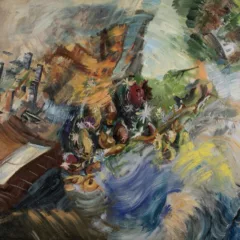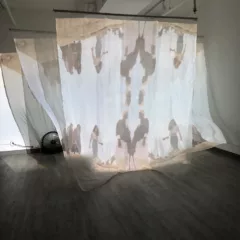Stop Making Sense
The central thesis of Transcendent Mess is that abstraction and material exploration are inherently a trans endeavor. The process of investigation via persistently seeing what can happen, results in something that is dodging representation.
Understandably, I’ve been asked by some of the artists who are keen to present the appropriate artworks, what do you mean by abstraction?
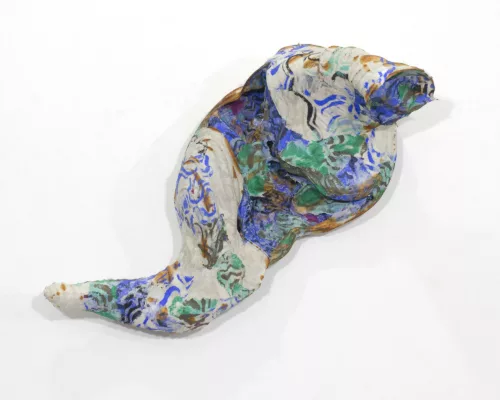
Pulp Paint on sheet-casted Abaca Paper, Embedded Steel and Aluminum Wire – used with permission of the artist
It is clear to me that what I mean by abstraction is inextricable from transsexuality itself. But when something is clear to you, and not necessarily to everyone else, it can be helpful to explain it.
How do you define something that by its nature inherently defies definition?
Do you define it against its opposite? Representation, much like cisgender, is a greedy category.
Represent comes from the Latin repraesentare, which meant “present again, bring back”, only post-classically did it come to mean “standing in the place of another”. The prefix “re” means “back” or “again”. To bring back another, to call to mind something that one has seen before.
Abstract, from Latin abstractus, meaning literally “drawn away”. The prefix “ab” means “away” or “separation”. To separate from association, which has come to mean to separate from concrete meaning entirely.
“I feel most real to myself in the studio and resent any description of what transpires there as “abstract” – which nowadays no longer signifies “to select” but, instead, something remote from reality. From whose reality? And on what level?” Robert Motherwell
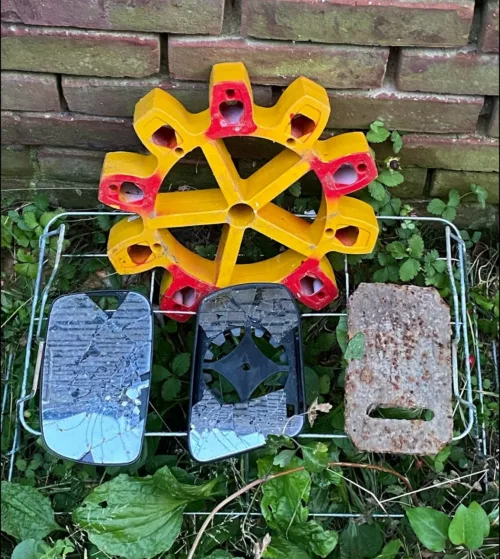
A circle can be the sun, two can be eyes, and human beings seek to find representation naturally wherever we go. Is it about intent then? The use of a circle and a triangle does not represent a woman until it is created with that intent. Otherwise, it is simply flat shapes. Or is it context? Does a circle and a triangle represent a woman when it’s on a bathroom sign?
Abstraction can also be about cultural viewpoints and recognition. Someone who has never seen a bathroom sign in its context, or trained into the cultural understanding that a circle above a triangle represents a woman, would perhaps be able to see solely the shapes. Particular signs and symbols are also incredibly culturally dependent. For example, the cross holds great significance in Catholicism and Christianity. Removed from that cultural understanding and context, can it be simply two intersecting lines?
Perhaps when seen outside of the context of the church or other religious imagery, it can be left as two lines. However, it is dependent on the context that the viewer is carrying. If they are a close observer of Christianity, a person who consciously or unconsciously looks for signs of the cross made incidentally by a window, a shadow, or a piece of scaffolding, then they may interpret it as bisecting lines to represent the cross of the crucifixion. If the viewer knows what a cross is, but was not raised religiously, or is not the sort of person to look for and interpret symbols, they may see a window, a shadow, a piece of scaffolding, or an abstract shape.
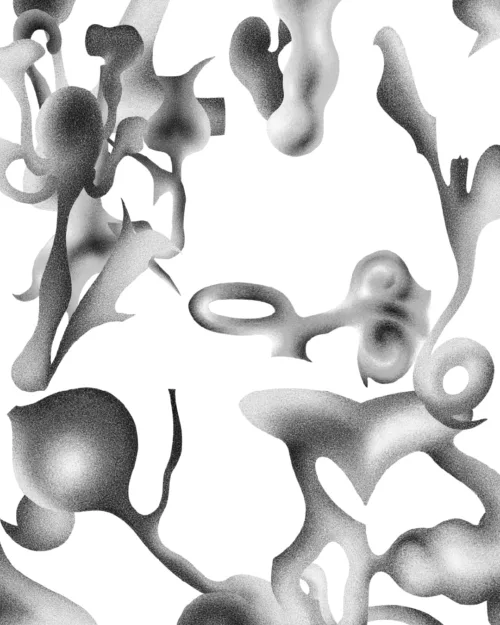
Abstraction is not a pure category.
“Abstraction need not be all-or-nothing… It is not a contradiction if an abstraction alludes to a figure, incorporates a found object that is recognizable for what it once was, or twists a recognizable image into a work that operates in relation to histories of abstraction. As well, the appropriation and queer adoption of recognizable images, objects, and artworks have been useful tools to question received meanings and to draw out suppressed possibilities.
“Impurity and promiscuity can be valued” – David Getsy
Molly Thayer, who works in almost exclusively found materials, became concerned that his work wasn’t abstract. He expressed that surely a loom is a recognizable device, a bouy is a real thing that exists in the world, and what is a more tangible concept than a quilt? He professed to me that often he does very little to the objects, sometimes he just finds them and cleans them. It’s interesting because often the items he finds are abandoned on the street, in the woods, in the ocean. They are far outside of their original contexts and have now entered the world as waste. Instead of buying objects and removing them from context to create work, Thayer adopts objects, putting them into the context of his creation. The lines of authorship further tangle when partially woven looms are left outside and vines begin to grow and include themselves. Deeply involved in nature, Thayer will sometimes credit other species for their work. There is something deeply transexual and abstract about questioning what and where the work is and who is responsible.
“My career probably began at the age of three, when I took up watching ant hills and protecting ladybugs. This caused a long interruption in my artistic progress because my family read this as an interest in science and directed me to nursing.” Ree Morton
So here, I believe is the crux of the matter; recognition.
For Chenxi Shao, a sculptural mushroom experiment is easily recognizable as a professor, the nest of rock and fiberglass is a crown, and the cone of circuit boards is a bamboo shoot. This is a funny case of abstraction. The works aren’t an attempt to represent these things, the sculptures simply grew up that way. Shao recognized that the sculpture was a professor and it was a simple truth, almost not even a title, just a fact.
“One thing is never another thing, and it’s a lie to say something is anything other than itself; it’s ontologically and physically impossible, in fact, not even apple and apple can be each other.” T. Fleischman
One can look at a painting of a tree by a lake with the sun in the sky and recognize the specific lake they swam in as a child. But you do not have to have swam in that lake to recognize that the painting is of a tree by a lake with the sun in the sky. It may remind you of the feelings you had of a lake in the summertime, or sitting under a shady tree, or you may simply recognize the efforts of the artist to create an image of these things. The feeling of childhood, cool water, the summer sky, and breezy shade can also be evoked outside of the image of the lake entirely and can be recognized in colors, sounds, and other forms.
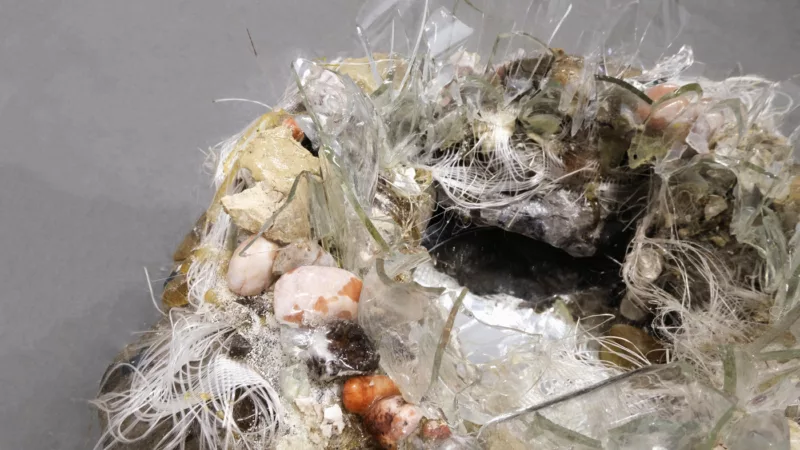
In Mary Henjes’ work, they draw forth feelings from the viewer that fall past descriptive categories. The work creates a personal association between mind and color. The bands of twining metal create a kind of halo of light reaching out. These are truly objects that illustrate different, obscure experiences with the divine. Whether sitting in traffic, or feeling the golden hands of the sun through the veil, these moments captured are mundane and holy, the abstracted face of God.
Once again, there are many established symbols for God, and they have spread globally due to colonization and the enforcement of certain religious expressions over others. It is tricky with the globalization of culture to find something that is NOT recognizable. Certain shapes are owned by certain brands and evoke certain principles of aesthetics, design, or even morality.
What is one to do with letters, perhaps the most trademarked shapes of all? In Mountain Pollen’s drawings, one catches seemingly familiar shape thoughts, but in their typography, the same principle is applied to characters that allude pretension and expectation. Each letter risks illegibility by simply being solely itself. Each A is its own A. They have managed to design a type that is somehow still readable this way while attempting to evade legibility constantly. It is both a representational success because it brings back into our sight something we have seen before and stands in for meaning. However, it also abstractly separates the letters from their typically identical counterparts.
But what I think is at play in abstraction is not necessarily working against all recognition. I think the artist while creating, and the viewer while viewing is seeking to recognize things that cannot be represented. There are so many things that simply can’t be shown, and often can’t even be written about.
We can recognize the feeling of rage, or ecstasy, or remorse, in an artwork although it is a thing that cannot be universally represented or recognized.
And maybe this is the risk in abstraction – by not necessarily using something culturally encoded (or using something differently or outside of the context of its recognition) the viewer may not recognize it. There may be no interest, care, or resonance. So perhaps abstraction seeks recognition without representation.
- “To us, art is an adventure into an unknown world, which can be explored only by those willing to take risks.
- This world of the imagination is fancy-free and violently opposed to common sense.
- It is our function as artists to make the spectator see the world our way – not his way.” Mark Rothko, Barnett Newman.
The recognition of intangible concepts. What is intangible, outside of your reach? Is that an actual positional concern? Is it literally related to what is nearest to your body?
In Kim Altomare’s work, there is a constant negotiation while making between his work and his body. Both literally in his manipulation of the materials and also in a constant attempt to spoil the definition of body and shape. The form slumps rather than curves, it is lumpy when it ought to be flat. One part of the paper escapes the form entirely, and another stands neatly in line. The frequency of his practice enables a state of the purely imaginary body, in which there isn’t and never was no one way a body should or ought to be. When a man’s body is simply what you see and to be gay is its logical sensory expression.
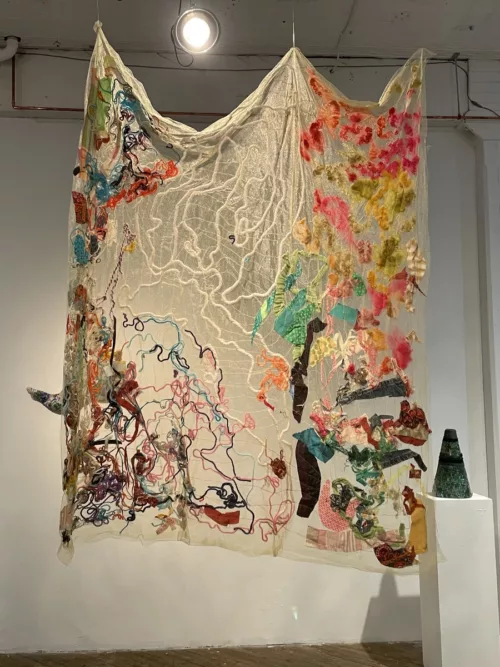
fiber detritus, scrap fabric 4’ x 4’ – used with permission of the artist
“An understanding of the body as irreconcilably wavering between the real and the imaginary.” Gordon Hall
Cisgender as a term originates from the 90s, designed in opposite to transgender, it is a spatially relational word. The prefix “cis” means “on this side of”, and the prefix “trans” means “on the other side of”. The words in itself imply a spatial relationship, in which the speaker is on one side and whether the speaker is cis or trans themselves, trans is on the other side. Although the term transgender goes back about 100 years previous to cisgender, and the use of the prefix “trans” to refer to people goes back further than that, trans is always on the other side of the speaker.
This distance is both spatial and impossible to travel because no matter who you are transgender is always on the other side. Maybe this is the clearest way we can see the abstraction of transexuality – existing in a space forever drawn away, always on the other side. This unknown intangible place, physically unreachable, impossible to represent, only captured through abstraction.
I shrugged. “I don’t want another label either. I just wish we had words so pretty we’d go out of our way to say them out loud.” Leslie Feinberg
The interest and frustration of the category of abstraction is such that even when we come to some kind of conclusion at the end of this essay… When I have spent over two thousand words on the topic, the use of it by artists in real-time can dash all my careful consideration. Suddenly it contradicts itself. For example, an artist can reveal that, with a title, they are creating ordinary forms, simply in a way you didn’t see. Or it turns out, you were looking at the picture upside down, or listening to the record backwards, but what can be done?
“Art is a paradox that has no Laws to bind it. Laws set can always be violated.” David Smith
Regarding oppositional categories, I like sense and nonsense. Sense being far narrower, nonsense being infectious, a few ink blots marring letters, a feature fallen off of a statue, a rip in the fabric, and all understanding is lost.
It is impossible to make sense out of non-sense, and thank God for that.




